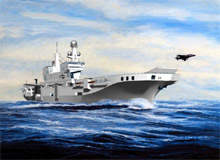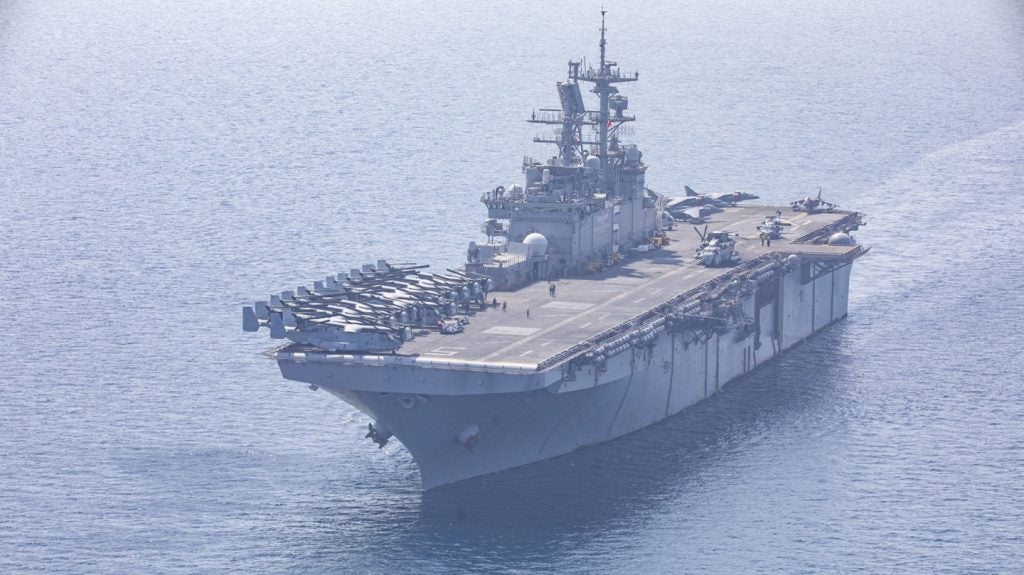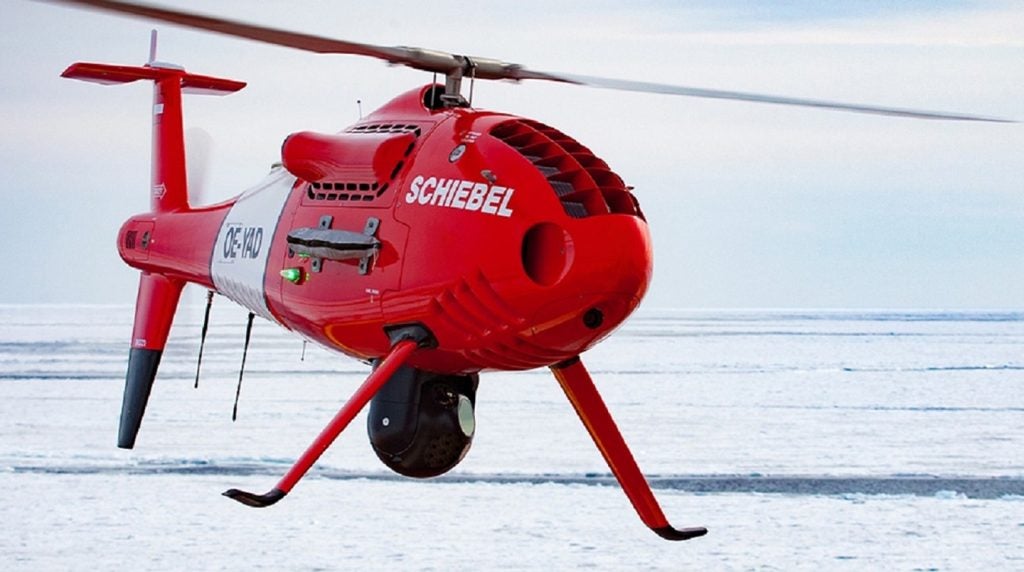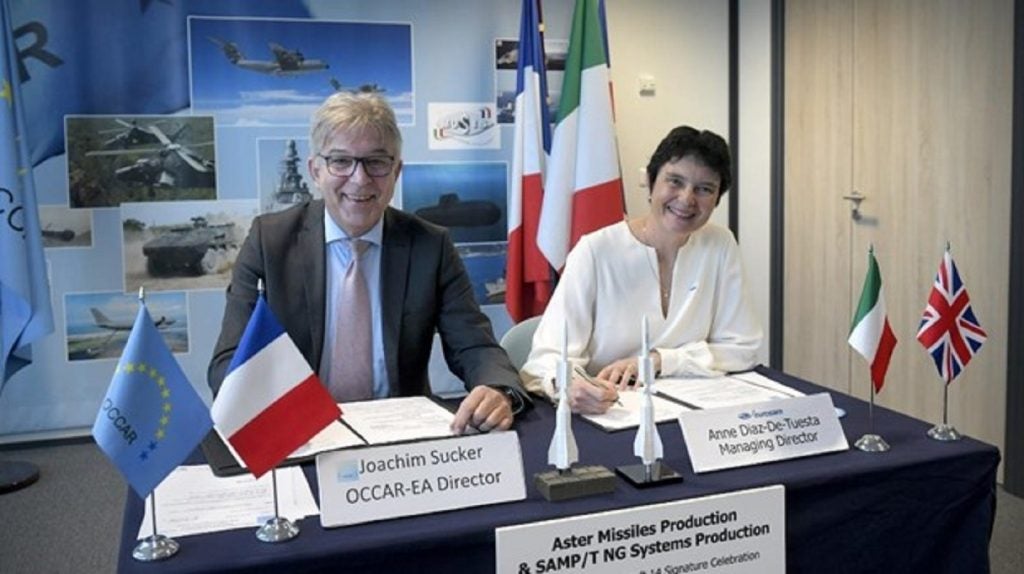
Keeping the so called ‘wider Mediterranean’ firmly in the national sight, while also acting jointly and globally, the Italian Navy has begun enhancing its naval assets. As power projection from sea onto land represents an essential part in modern military scenarios, the Marina Militare Italiana wants to more than double its current amphibious capabilities by 2020.
The key element, if it comes to Italian maritime power projection, is the new flagship of its navy, the 27,100t VSTOL aircraft carrier Cavour. Besides the ship’s main role in warfare with its air wing of AV-8B Harrier II Plus and later joint strike fighters it can also act as a landing platform helicopter (LPH). For this purpose it can accommodate about 400 marines and its hangar is reconfigurable for tanks and other vehicles.
Italiana wants to more than double its current amphibious capabilities by 2020.”
Early in 2009, this new pride of the Marina Militare replaced the older Garibaldi carrier, which is only half of its size. Garibaldi will now serve for a transitional period as an LPH to strengthen Italian amphibious assets. These currently include three 15-to-22-year-old landing platform docks (LPDs), one San Giusto Class (8,000t) and two San Giorgio Class (7,790t) vessels.
During the Lebanon conflict in 2006 Garibaldi and the LPDs saw action together when they were deployed to the middle-eastern country’s shores and landed a joint contingent of 1,000 men. In the future, more than twice as many soldiers could storm onto the shores, as the naval strategy also envisages a replacement of these LPDs by three, much larger landing helicopter deck (LHD) vessels beginning in 2016.
How well do you really know your competitors?
Access the most comprehensive Company Profiles on the market, powered by GlobalData. Save hours of research. Gain competitive edge.

Thank you!
Your download email will arrive shortly
Not ready to buy yet? Download a free sample
We are confident about the unique quality of our Company Profiles. However, we want you to make the most beneficial decision for your business, so we offer a free sample that you can download by submitting the below form
By GlobalDataPlanning for this project began in 2008 and the keel-laying of the first, yet unnamed, ship is scheduled for 2012. As their predecessors they will be built by Italian company Fincantieri and, according to the navy, the estimated cost for the whole project will be almost €1.5m. As has today become common with many naval vessels, the design of the new LHD will make extensive use of commercial standards.
See Also:
Despite a higher reliability and easier maintenance of these new ships, naval officials point to an increased flexibility and better design reconfiguration as some of the key benefits. These factors make them more versatile, meaning they have uses beyond military missions. The four envisaged main tasks of the new LHDs will be:
- support to amphibious operations
- crisis response operations
- non-combatant evacuation operations
- humanitarian assistance and support in case of natural disasters.
While the Marina Militare is still determining final specifications, it is already obvious that with a full load displacement between 17,000t and 19,000t the new LHDs will outmatch their predecessors significantly. With an overall length of 170m to 190m they will be up to 60m longer and with a beam of 31m to 33m also up to 13m wider. Despite this, the draught is only to increase by less than a metre to 6.5m. The vessels are to maintain a continuous speed of up to 21kt and have an endurance of up to 7,000nm at 16kt.
For most of their missions the LHDs will have to operate in the proximity of coastal or in shallow waters.
Keeping today’s military scenarios in mind, the Italian Navy sees asymmetrical attacks from sea, land and air as the biggest possible threats, while conventional attacks remain a possibility. Therefore, the vessels will receive different-calibre guns for self-defence as well as passive and active measures to ensure the survivability against mines or torpedoes and they will be able to operate under CBRN conditions.
A ship in command
In the words of a senior Italian naval official, one major advancement of the LHDs will be their capability to act as a command ship, especially for the commander amphibious task force or commander landing force (CLF). For this the C3 systems will comprise an integrated communication system as well as adequate C4I capabilities to maintain a local air-maritime picture for the coordination of naval and land forces.
Each vessel will be able to embark, launch, support and withdraw a landing force of up to 750 men, together with a CLF brigade command post, with each LPD’s capability today amounting only to 350 marines. Accordingly, the space for vehicle transport, especially armoured vehicles and tanks, will also rise significantly. For amphibious landing operations a 50m×15m stern-floodable dock will be able to accommodate four landing crafts mechanised, allowing two of them to operate simultaneously.
As their new classification already hints, above all these new vessels will boost the capability of the Marina Militare Italiana to insert forces by air. Today’s LPDs can operate up to four helicopters and have no hangars at all. The new LHDs’ flight decks with five landing spots will be able to handle up to eight EH101-type helicopters and the ship’s hangars can accommodate five EH101 helicopters. In 2008, a senior naval official even pointed out, that two landing spots might be outfitted to allow the take-off and landing of heavier helicopters or VSTOL aircrafts like the AV-8B.
Sophisticated medical care
Unlike their predecessors, the new vessels will also receive extendable, well-outfitted hospital areas. Besides standard medical service for the ships 200 crew and other embarked additional personnel, this will include a surgery, radiological and laboratory diagnostics or dental treatment areas. It will also use telemedicine to increase these capabilities further. The capacity for stationary treatment will be at least 50 hospital beds and an adequate number of beds for intensive / semi-intensive treatment.
In this standard configuration on an area of 1,000m², the ships’ hospitals will be able to meet Nato medical evacuation doctrine ‘role 2 enhanced’ standard for tactical medevac. Together with an additional 1,000m² convertible area, their capability can be upgraded to ‘role 3’ standard. This will allow them to deal with massive medical emergency surgery and casualties from combat areas or emergencies from disaster zones, when needed.
As the LHDs are given an explicit civil role in disaster relief scenarios, this will be considered in their design. When acting as a saviour in times of need, the vessels will not only be able to rely on their substantial medical and aviation capabilities but will also be equipped with a fresh water desalinisation system capable of delivering up to 150t of drinking water a day. This will use pumping pipelines and an emergency power system that will supply up to 1,000 people on shore with electricity.







